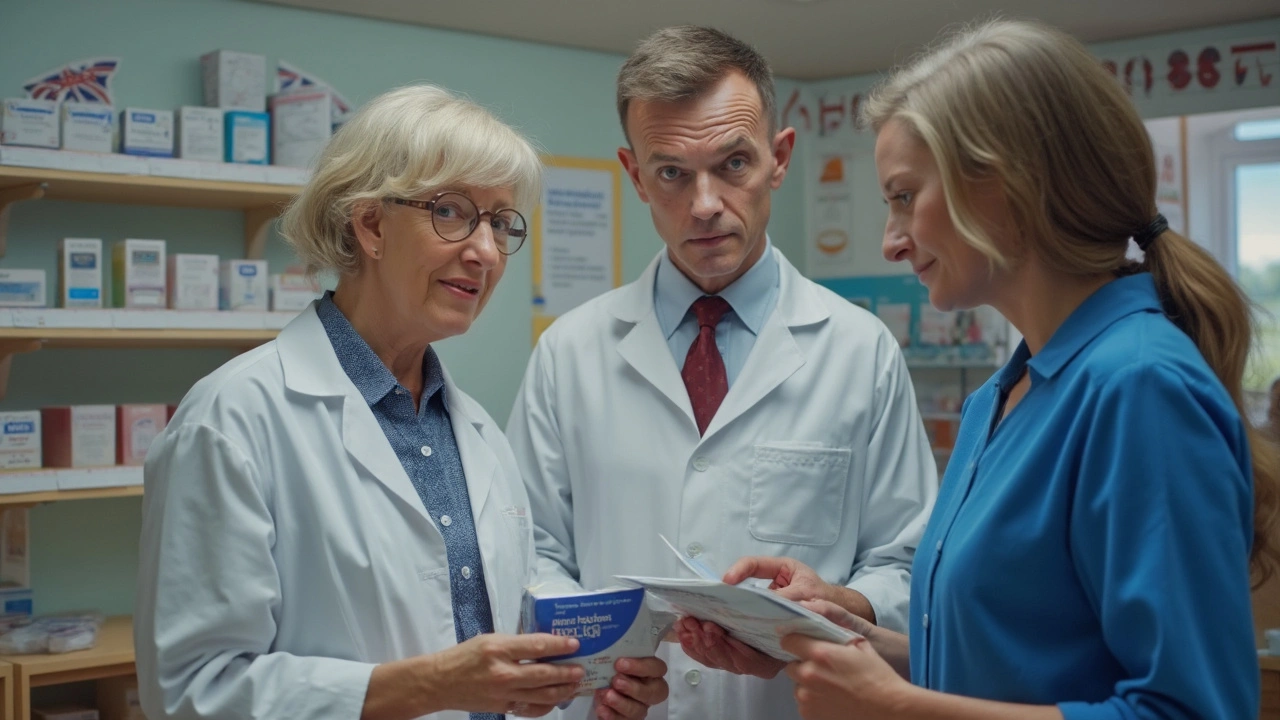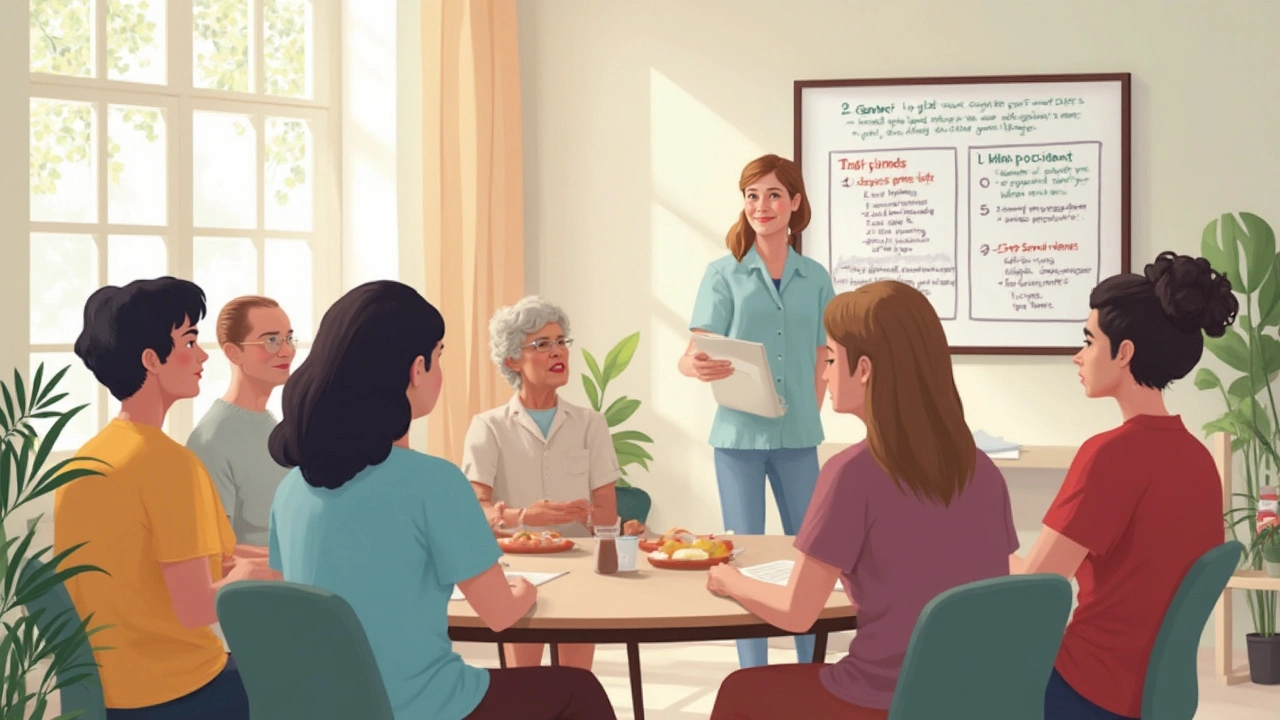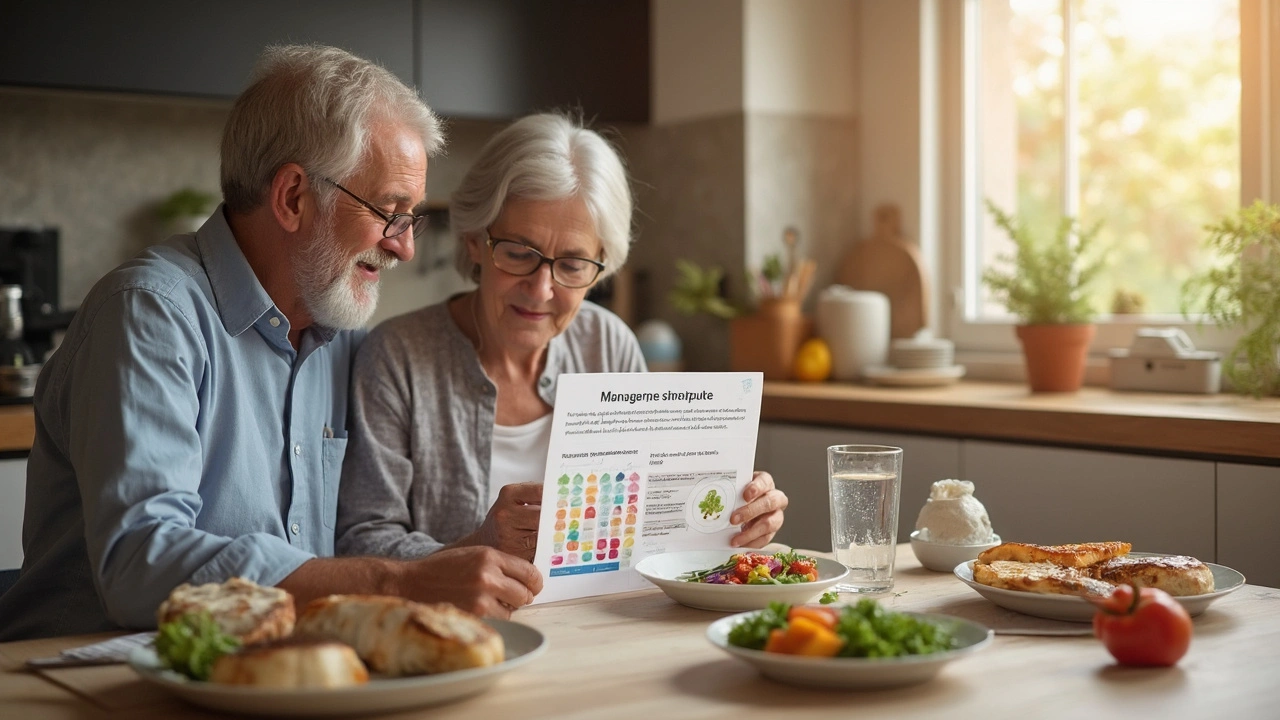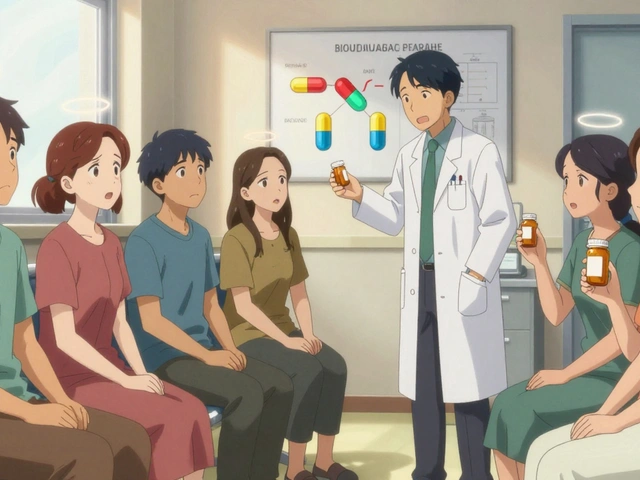Imagine your body’s chemistry as a tightrope walk. One tiny slip and those delicate balances—like phosphate and calcium—can tip, setting off a whole chain of problems. That’s precisely the sort of edge people with kidney issues are forced to live on. Too much phosphate in your blood? It’s not just a number on a lab slip; it’s itchy skin, weak bones, and even heart damage lurking in the background. This is why PhosLo, a medicine many have never even heard of, is a big deal for anyone managing chronic kidney disease.
What Exactly Is PhosLo and Why Does It Matter?
Most people don’t spend a lot of time thinking about their phosphate levels, but if your kidneys are on strike, those numbers start to matter. PhosLo is a prescription medication packed with calcium acetate, and its one job is to grab excess phosphate from your food in your gut so it never slips into your bloodstream.
Here’s how it works: Normally, healthy kidneys do all the dirty work, filtering phosphate out of your blood and sending it to your urine. Kidneys that aren’t working right? They leave all that extra phosphate floating around. Too much phosphate is a hazard because it binds with calcium, forming hard deposits in your blood vessels and turning your bloodstream into a slow-motion traffic jam. Cue heart troubles and brittle bones—not stuff you want.
What makes PhosLo clever is it acts in your stomach, not in your blood. It literally binds phosphate in your gut, and that bundle gets flushed out in your next bowel movement, never even touching your system. It’s usually prescribed to people with end-stage renal disease (ESRD) who are on dialysis, since their kidneys just aren’t doing the job anymore. According to the U.S. FDA, PhosLo’s active ingredient, calcium acetate, was approved for medical use in the late 1990s and quickly became a staple for nephrologists everywhere.
PhosLo comes in tablet and capsule forms, usually taken with meals—since that’s when most of your dietary phosphate arrives. Typical prescriptions range from two to four times a day, always with food.
Who Needs PhosLo: Digging Deeper Into Hyperphosphatemia
The medical name for high phosphate levels is hyperphosphatemia. It’s mostly a problem for folks with severe kidney disease, especially those on dialysis. Why? Because dialysis removes some phosphate, but not enough. Food is loaded with phosphate—think dairy, nuts, meats, and especially packaged foods jammed with additives—and it adds up fast when your kidneys are sluggish.
Symptoms don’t always show up right away. The trouble sneaks up over months or even years. So, if you’re feeling itchy all over, noticing bone pain, or your doctor is on your back about your calcium-phosphate balance, you’re in the danger zone.
Doctors will usually check your blood phosphate level at least once a month if you’re on dialysis. According to 2023 data from the Australian Institute of Health and Welfare, about 18,000 Australians receive regular dialysis treatments, and the vast majority need something to control their phosphate. Guidelines from Kidney Health Australia recommend keeping blood phosphate between 1.1 and 1.8 mmol/L. Above that, and you’re in “treatment required” territory.
The main alternatives to PhosLo are sevelamer and lanthanum carbonate, but calcium acetate remains popular, especially for people who don’t have high calcium levels to start with. One 2018 review in Nephrology Dialysis Transplantation found that PhosLo is as effective as these newer agents for many patients, but it’s also cheaper and doesn’t require swallowing monster-sized tablets.

How to Take PhosLo Safely: Tips and Things to Watch Out For
Medication isn’t magic; it works best when you know all the little tricks of the trade. With PhosLo, you can’t just pop it like a multivitamin and call it a day. Timing, food, and even other meds all play a part.
- Take With Meals: This isn’t optional. PhosLo has to be in your gut at the same time as phosphate. Miss the timing, and it’s about as helpful as locking the barn after the horse runs off.
- Stick to Your Prescribed Dose: Don’t double up because you think you ate a high-phosphate meal. Overdoing PhosLo can mean you get too much calcium in your blood, which comes with its own set of problems—think kidney stones, confusion, or heart rhythm blips.
- Watch Out for Constipation: This side effect is real. It happens to about 1 in 10 users, according to a 2022 safety analysis published in Clinical Kidney Journal. Drink enough water (if your fluid allowance allows), eat some fiber, and let your care team know if things get jammed up.
- Space It From Other Meds: Calcium can mess with the absorption of some medicines, like certain antibiotics or iron supplements. Best practice? Leave a 1-2 hour gap between PhosLo and these other pills.
- Keep Tabs on Your Calcium Levels: If you already run high on calcium, PhosLo might not be your best choice. Some people will need regular blood checks, which your nephrologist can organize.
- Report Any Unusual Symptoms: If you’re suddenly feeling weak, nauseous, super thirsty, or your mood crashes, call your team. These could be signs of calcium overkill.
Here’s a helpful data table showing common side effects based on real-world studies:
| Side Effect | Approx. Frequency |
|---|---|
| Constipation | 10% |
| Nausea | 6% |
| Abdominal pain | 4% |
| Elevated calcium | 2% |
| Weakness/Fatigue | 2% |
Living with PhosLo: Real-World Advice
Let’s talk about what it actually feels like to take this stuff. No one wants to plan their meals around a handful of pills, especially not when life’s already crowded with medical appointments and tiredness from dialysis. So, finding tricks to make PhosLo less of a hassle matters a lot.
People I’ve spoken to in the Sydney dialysis units often keep a small pill organizer with them. That way, if a meal pops up—you grab a sandwich in the city or find yourself at a friend’s BBQ—you’re not left guessing or skipping a dose. Some find using a phone alarm helps them remember, especially if meals are all over the place.
Eating out or traveling? It’s easy for a high-phosphate meal to sneak in. Keep a mental list (or use a notes app) of foods that pack a phosphate punch: colas, processed cheeses, sausages, and those “instant” boxed meals. When in doubt, ask for ingredients or choose simple items. And don’t let anyone make you feel awkward about popping your pills with lunch—it’s just as normal as someone grabbing their allergy meds.
If you get bored of plain water, check with your renal dietitian about what else you can drink. Remember, keeping up with fluid and fiber makes constipation from PhosLo less likely. People often find kiwi fruit, pears, or high-fiber cereals work wonders—just make sure they're on your approved list depending on your potassium levels.
One useful tip: Pair up with other patients. Many dialysis centers have informal WhatsApp groups where people share coping tips and the occasional low-phosphate recipe. Or check Kidney Health Australia’s website for support events; you’ll hear stories way more useful than any doctor’s lecture.

PhosLo and Your Diet: Getting the Best Results
If you've made it this far, here's where details pay off. PhosLo works best as part of a three-legged stool: medication, a kidney-friendly diet, and regular follow-up with your doctor. Mess up the balance, and things get wobbly.
Most people on dialysis are told to watch their phosphate intake. Problem is, phosphate isn’t just in the obvious stuff—milk, cheese, red meat—it’s hiding in all sorts of processed foods as an additive. Check out any label that lists "phos"—like calcium phosphate, sodium phosphate, or dipotassium phosphate. Food manufacturers sneak it in to keep products moist or make them last longer. According to a 2024 Australian diet survey, people with kidney disease often get up to 50% of their phosphate load from hidden additives alone.
So how do you outsmart your plate?
- Shop the perimeter at the supermarket. The fresh stuff—fruits, veggies, unprocessed meats—tends to be lower in phosphate.
- Watch out for “wholegrain” breads and cereals. Some are loaded with phosphate additives, though you can usually spot them on the ingredients list by looking for anything starting with "phos." Choose the ones with the shortest ingredient lists.
- Cut back on processed cheese, deli meats, canned fish packed with bones, and cola-based soft drinks. Swap with alternatives when possible.
- Don’t forget that home cooking beats takeout about every time when it comes to controlling phosphate. If cooking isn’t your thing, try simple sheet pan meals or a pressure cooker to save time.
- Keep a list of your “safe foods” on your fridge or phone. Make it a game with your partner or kids—who can spot the sneaky phosphate first?
Your dietitian can give you a customized food list. If you’re not seeing one already, it’s worth asking your GP for a referral; studies show people who meet with a renal dietitian cut their phosphate levels quicker—and keep them down for longer.
Here’s a simple example meal breakdown for a low-phosphate day:
| Meal | Lower-Phosphate Option |
|---|---|
| Breakfast | Oats with blueberries and soy milk |
| Lunch | Chicken breast salad with baby spinach and vinaigrette |
| Dinner | Grilled fish, steamed zucchini, brown rice |
| Snack | Pear slices, rice cakes |
PhosLo isn’t a substitute for dietary know-how. It’s more like a safety net. If you slip, it’s there to catch what your kidneys can’t handle, but it won’t bail you out of every high-phosphate meal.
Looking down the road, researchers in Australia and beyond are always exploring new solutions. There are clinical trials for next-gen binders that don’t use calcium, or that dissolve with fewer pills per day. But for now, PhosLo stays in the mix for thousands of us here in Sydney—and plenty more in the rest of the world—because it’s proven, accessible, and does the job when it needs to.





Hey everyone! Just wanted to add that taking PhosLo right with each main meal is the golden rule – the phosphate from food is hanging around in your gut, and the binder needs to be there to catch it.
If you ever miss a dose, try not to double up later; instead, set a phone alarm so you don’t forget the next meal.
Also, keep a small pillbox in your bag if you’re often on the go – it saves a lot of panic when you’re at a restaurant.
And remember to stay hydrated within your fluid limits – water helps move things through and cuts down on constipation.
Finally, always let your care team know if you notice any new skin itchiness or cramps, because they can adjust the dose before things get serious.
Look, the “official” story about PhosLo being a simple calcium acetate binder is just the tip of the iceberg – the big pharma machine doesn’t want us to see the hidden calcium overload that can silently calcify our arteries.
They market it as “cheap and effective,” but they’re deliberately downplaying the risk of hypercalcemia, which can lead to heart rhythm chaos and even covert brain fog.
Stay vigilant, read the fine print, and question why the FDA rushed its approval in the 90s without demanding long‑term independent studies.
If you’re not comfortable trusting the mainstream narrative, consider alternative binders that don’t dump extra calcium into your system.
It is a moral imperative that every patient be fully informed about the cascading consequences of phosphate overload.; When the body is deprived of proper renal function, the hidden tyrant called hyperphosphatemia begins to gnaw at the very foundations of skeletal integrity,.; The calcium that binds to excess phosphate forms stubborn deposits that line the vascular corridors, turning life‑saving blood vessels into hardened conduits.. Such insidious calcification is not merely a physiological inconvenience; it is an ethical breach of the duty of care owed to those who trust the medical establishment.. PhosLo, while ostensibly a benign calcium acetate tablet, carries within it a double‑edged sword that can, if misused, precipitate calcium excess and subsequent nephrolithiasis,.; Patients who neglect the prescribed timing or exceed the dosage are not merely errant; they become unwitting participants in a self‑destructive cycle.. Therefore, clinicians must wield the prescription with judicious restraint, and patients must heed the simple yet profound instruction to take the pill with meals.; The principle of non‑maleficence demands that no therapy be allowed to cause more harm than benefit.. In this regard, the oversight of regular serum calcium monitoring is not optional, but compulsory.; To ignore this protocol is to turn a blind eye to foreseeable injury, a negligence that borders on moral culpability.. Moreover, the industry’s promotional literature often glosses over the 2% incidence of elevated calcium levels, presenting a skewed risk profile.; Such selective transparency betrays the trust that should undergird the patient‑physician covenant.. We must champion a culture of full disclosure, where every side effect, however rare, is spoken with candor.; Only then can the collective conscience of the healthcare community align with the virtues of honesty and responsibility.. In summary, PhosLo is valuable when used responsibly, but its power must be balanced with vigilant oversight, lest we sacrifice long‑term health on the altar of convenience.
Yo, listen up – you cant just pop PhosLo whenever you feel like it, ya know? If you skip a meal and still take the pill, its like trying to catch a fish with a net full of holes. I seen folks double‑dose ‘cause they think more is better, but that just leads to extra calcium, and trust me, you dont want kidney stones creeping up on ya. Keep it simple: one pill with each main course, and dont forget to drink enough water – even if your fluid limit is tight.
From a systems‑biology perspective, phosphate homeostasis operates as a tightly regulated feedback loop, wherein intestinal absorption, renal excretion, and cellular buffering converge.
PhosLo introduces an exogenous sequestration node, effectively reducing the net influx term during the post‑prandial phase. By integrating this intervention with a low‑phosphate dietary algorithm – for instance, employing a gram‑per‑kilogram phosphorus intake model – clinicians can modulate the set‑point of serum phosphate more predictively.
Patriots, wake up! The government’s health agencies are pushing PhosLo as a cheap fix while ignoring the fact that its calcium load could weaken our nation’s heart health, making us vulnerable to foreign threats. They hide the data, and we must demand transparent studies before we hand out these binders to our brave dialysis patients.
I hear the frustration that many patients feel when juggling medication schedules with dialysis, and I want to acknowledge how overwhelming it can be.
Taking PhosLo consistently is a small but meaningful act of self‑care, and pairing it with mindful hydration and a balanced diet can ease the burden. If you notice any subtle changes – a new ache or a shift in mood – consider sharing it with your care team; they’re there to support you.
Respectfully, I would advise maintaining a professional tone when discussing medication adherence, and to refrain from divulging personal health details in public forums. It is prudent to consult directly with your nephrologist regarding any dosage adjustments.
For anyone looking for practical tips: use a weekly pill organizer labeled with breakfast, lunch, dinner, and snack times. This visual cue reduces missed doses, especially on dialysis days when schedules can shift unexpectedly. Also, keep a small notebook of any side effects you experience; bringing that to your appointment helps the doctor fine‑tune your regimen.
yeah, just keep the water flow steady and the pills with food, chill.
Sticking to the meal schedule makes PhosLo work.
Let’s keep the momentum going! You’ve already mastered the basics of timing and dosage, now aim to track your lab results weekly – seeing those numbers improve is a huge confidence boost and a clear sign that your effort is paying off.
Viewing PhosLo through a cultural lens, many communities view medication adherence as a collective responsibility; sharing experiences in local support groups can foster a sense of solidarity and reduce the stigma surrounding chronic kidney disease.